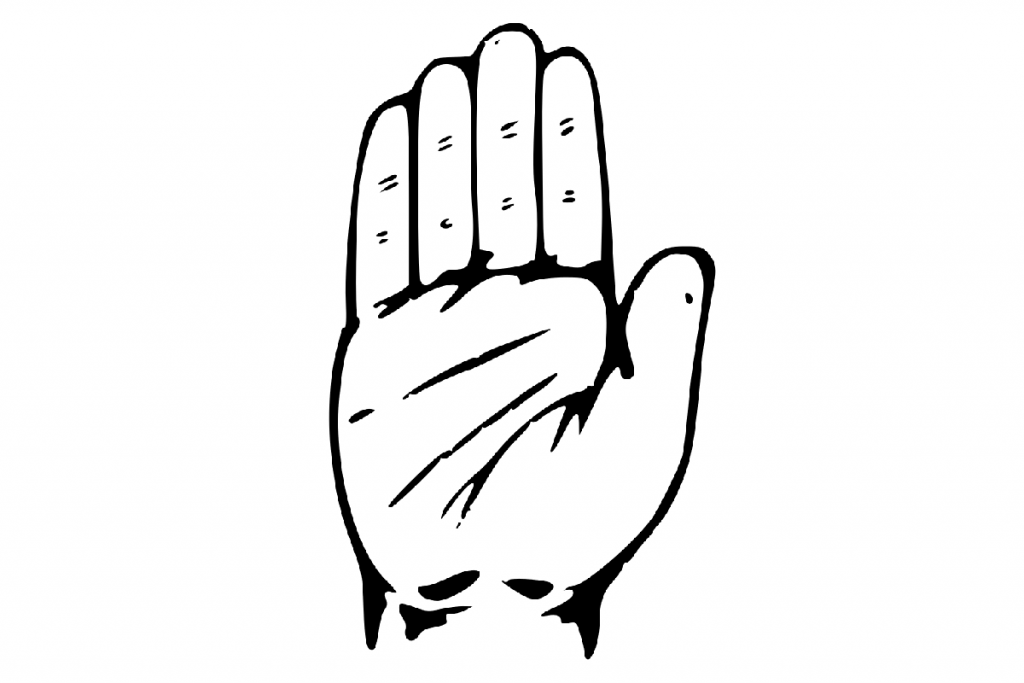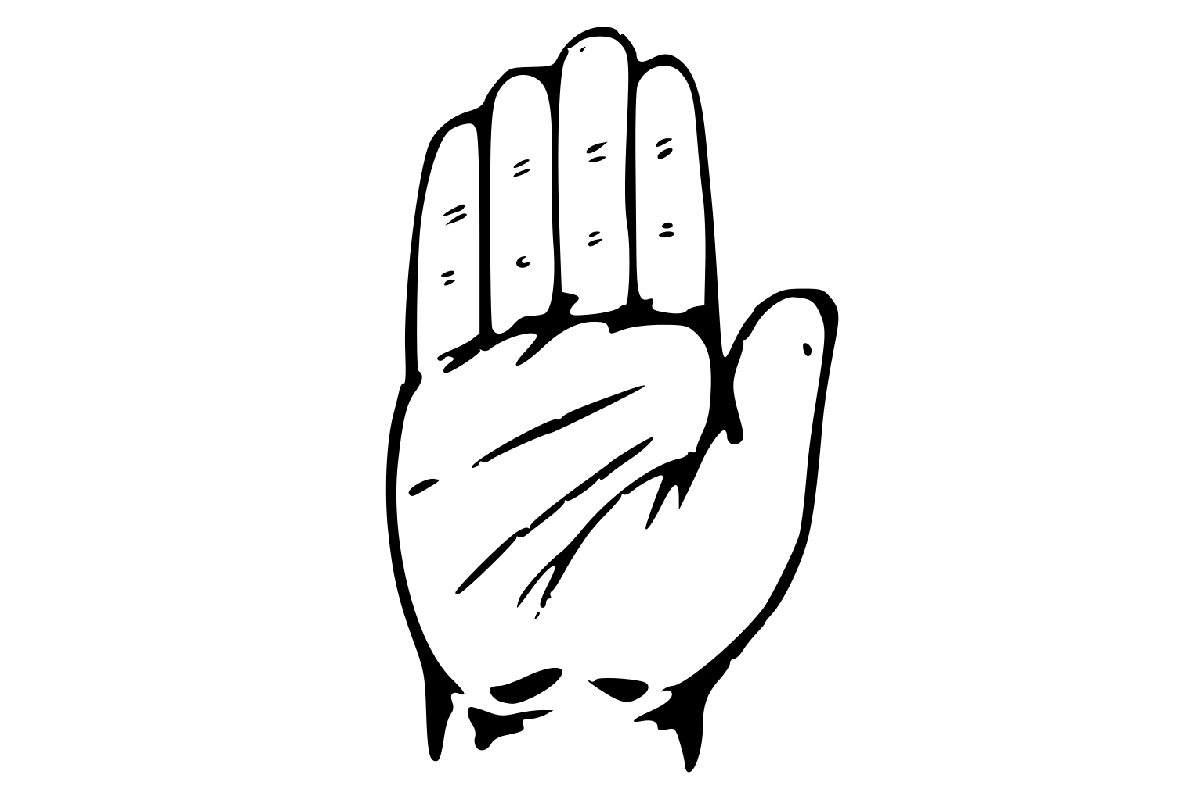On Defection: Why Always the Congress MLA?

Rishi Kishore is a political analyst. His research interests are political parties, election and the political economy of coal.

[responsivevoice_button voice=”US English Male” buttontext=”Read out this Theel for me”]
In 2003, the Atal Bihari Vajpayee government passed the 91st constitutional amendment [1] to strengthen the Anti-Defection Law. The law stated that any elected representative will be disqualified if less than two-third MLA/MP split from the party at a time. Earlier under the 52nd Amendment, the minimum requirement for the split without any legal consequence was one-third of the total MLA/MPs from a party defecting at once.
Defection is one of the most frequently used words in Indian political vocabulary. On the democratic ground, defection undermines the voters’ mandate as it is seen as a backdoor entry to the corridors of power. The discussion on defection has gained ground again, as the incident of party-switching has increased in the last 3-4 years. Ironically, the same BJP has exploited the loopholes of the law, which the previous Prime Minister had amended to control defection. As per the constitution, the majority figure is calculated based on the number of representatives who cast their vote during the floor test. So, the second-largest party needs a minimum number of other party MLAs to resign in order to reach the magical figure in the reduced assembly strength (arises due to the defection of MLA). So BJP’s modus operandi has been that – instead of getting the 2/3rd support of the other party legislators to split, it relies on the resignation of the opposition party legislator. Once the required number of MLAs of other parties are ready to resign, BJP claims their stake to form the government. Once the party forms the government in the state, the party waits for a by-poll with the hope of winning the defector seat and securing the majority for the rest of the term.
Astonishingly, in recent years, mostly Congress party MLAs changed their allegiance and joined BJP. In Karnataka, thirteen Congress MLAs ditched the party, and there was almost no split in the regional party JD(S). Similar splits within the Congress happened in Goa, Madhya Pradesh, and again in Rajasthan. In Rajasthan, however, Congress somehow managed to prevent the cracks [2] within the party from getting transformed into a major split after a month of drama.
Elections are unpredictable in nature and involve a risk of losing. So the interesting question is what incentivizes a Congress MLA to ditch their party and switch to the rival party to face the voter again? A by-poll has a higher risk game for the BJP as the seats which go for the by-poll are the seats Congress had won in the previous election. Thus, it is equally pertinent to understand how BJP has the confidence of winning the by-polls.
To understand this, we need to look into the changing electoral arithmetic in the country in the last 30 years. The decline of the Congress party started during Rajiv Gandhi’s tenure precisely after the overturning of Apex court’s judgement on the Shah Bano case in 1986 [3]. Congress used to have a healthy and unusual electoral mix [4], as it had a strong command over the upper caste vote bank, Muslim vote bank, SC vote bank, and OBCs also used to vote for the Congress. Suggesting that the Congress party appealed to the majority of the communities in post-independence India, it was the most dominant party of India’s post-independence history.
However, the overturning of Shah Bano Judgement by the Rajiv Gandhi Government [3] led to anger and erosion of the progressive Muslim vote. In addition, Hindus saw this action as an act of Muslim appeasement. So, this action also dented the Hindu vote bank of the Congress and mainly the upper caste vote. Till late 1980s, Congress used to have a strong preference among all the upper caste [5] across the country, except the Kayastha. The Kayastha, which has a 1.5-2% vote share and has a presence in the urban constituencies, drifted away from the Congress during the emergency.
Later, to pacify the upper caste and Hindu’s anger, Rajiv Gandhi took two steps. First was not to implement the Mandal Commission recommendation [6]. Second was opening the Gate of Babri Masjid [7] so that Hindu could go and worship Lord Rama in Babri Masjid outer courtyard, Ram Chabutra, and later starting the 1989 election campaign from Ayodhya [8]. These two-steps eroded the Congress Muslim vote in the states where Muslims had an alternative for the Congress, other than the BJP [9].
Due to the non-implementation of the Mandal commission report, the OBC vote started to drift from Congress [10]. As a consequence, Janta Dal under VP Singh came to power in 1989 and implemented the Mandal Commission recommendation of OBC reservation in government jobs. This marked the beginning of ‘Mandal politics’ in India. At the same time, Lal Krishna Advani started the Rath Yatra which strengthened the Hindutva ideology, and Kamandal politics began. The VP Singh government halted the rath yatra by arresting LK Advani in the Janta Dal-ruled state of Bihar, which eventually led to the collapse of the VP Singh government as the BJP withdrew the support from the Janta Dal. Although the Janta Dal government collapsed, Muslims in the Hindi heartland became the firm supporter of Janta Dal [4]. Later, the disintegration of Janta Dal into different fractions gave rise to regional parties and OBC caste leaders in many significant states. These local parties further catered to the Muslim vote bank, and Congress was not able to attract the Muslims again in the states where the Muslims had the option other than the Congress, against BJP. By this time, the rise of Mandal-Kamandal politics had taken all the core vote banks of the Congress Party.
SC leaders emerged in many states alongside the rise of OBC leaders. After Babu Jagjivan Ram, Congress Party has never promoted any leader of similar stature at the national level. In the absence of the national or local leader, the SCs drifted away from the Congress at the state level, as states saw the emergence of the alternative SC [11] leadership like Kashi Ram-Mayawati, Ram Vilas Paswan, and others.
During the Mandal-Kamandal politics, instead of building the ground strength and cobbling a new caste block, Congress started to rely much on the personality at the state level or constituency level to win the election. This arrangement has worked at the state level for many years till 2014 and even afterward at the selected constituency level. The states where Congress remains relevant are those states where the CM candidate or local candidate has their vote bank and once the local leader’s days are over, Congress is doomed in those states. To illustrate, Congress was powerful in Andhra Pradesh till Rajashekhar Reddy was alive; in Delhi, Congress was strong till Sheila Dikshit had a strong support base; and in Odisha, till JB Patnaik was active in the state politics.
The states where Congress is still a challenger without the support of allies are the states where Congress has either a strong leader or the politics are bipolar, i.e. there are only two dominant parties, implying that- in the absence of an alternative, the Congress Party is getting the benefit of anti-incumbency. Like in Madhya Pradesh — the politics is bipolar and the party until recently had a local leader from every region of the state. In March, Jyotriaditya Scindia- a royal scion and leader with massive popularity in the Gwalior-Chambal region- switched from the Congress to BJP [12], and with him, the majority of local Congress MLAs from the Gwalior-Chambal region switched to BJP, eventually leading to the fall of Congress Party government in the State [13]. In Rajasthan, again, politics is bipolar and the party has local leaders like Sachin Pilot and Ashok Gehlot. Haryana Congress became the challenger as they promoted local leader Bhupinder Singh Hooda at the last minute. Punjab politics is again bipolar and the party has a local leader, Amrinder Singh. In Chattisgarh, the politics is bipolar, and Congress gets the benefit of anti-incumbency against the BJP but the state is the only exception where the party successfully harnesses a new leadership. The victory of most of the congress defectors on BJP tickets in by-poll of Karnataka [14] even at the constituency level, tells the Congress party is winning mainly due to the personal charisma of the party candidate.
The congress party’s top leadership had lost its shine since the 1999 Lok Sabha election when the party tally was 114 [15], lowest before 2014, and 2019 elections. In 2004, Congress strategized at the constituency level and fought the election on a local issue and encashed the popularity of local leaders and the anti-incumbency against the rival candidate. So relying on the local leader to win the election has worked for the Congress till the party was powerful in the center and that has incentivized the local leaders to be with the party. Once the party lost two consecutive national elections and the appeal of the Congress among the flexible voters had declined further, there is no incentive for the local leaders in serving the party. Thus, if their ambitions are not fulfilling, choose the best available alternative, BJP.
Since 2014, the BJP has the ambition of Congress Mukt Bharat. The BJP’s eagerness to topple the elected government has created an alternative for the new generation defector or precisely the Congress defector. The Congress does not have a strong vote bank apart from the minorities and the local MLA wins the election on their own vote bank and charisma. So switching the party does not erode their vote base, and the BJP voters substitute the loss of the Muslim vote bank. The BJP vote bank is intact and so in most of the defector seats where BJP was the runner up in the previous election, the probability of winning the election increases for the defector in the by-poll.
Apart from the electoral arithmetic, the elected MLA allegedly gets the other benefit. The question is the alleged benefit is available for the regional party MLAs also, then why don’t they switch the party even in the state where defection looks like an attractive option? For instance, the RJD MLAs in Bihar, JD(S) MLAs in Karnataka, NCP MLAs in Maharashtra, and others. The answer again lies in the electoral equation. The regional parties have a strong command over a particular section of the voter. RJD MLAs win the election due to the party’s cohesive Muslim and Yadav vote bank. So, in case of defection, apart from tiny personal voters- the MLA does not have the support of its previous electorate. In JD(S), similarly, the MLAs win due to the Vokalinga support to the party. For NCP MLA, the blessing of Sharad Pawar voter is needed and in the 2019 Maharashtra assembly election and Maharashtra Lok Sabha by-poll, we have seen the NCP defector lose the election [16].
Although congress got around 19% vote share in both the 2014 and 2019 General election, except for a few states majority of the vote share is of the minority voter, as at the national level minority believes Congress is the only alternative to the BJP. Therefore, until Congress is ready to take the corrective measure in a long-haul battle, the defection in Congress and the toppling of the elected government is likely to continue.
So, due to the erosion of the vote base of Congress, the declining vote-catching ability of Congress top leadership, personal popularity of the Congress local leaders, and the non-fulfillment of ambition- incentivizes the congress MLAs to switch the party. The BJP takes the risk as the voter base of BJP is intact and the party also gets the benefit of forming the government in the state.
References
[1] A. Jaitley, “National Portal of India,” 26 April 2003. [Online]. Available: https://www.india.gov.in/sites/upload_files/npi/files/amend91.pdf.
[2] The Tribune, “Gehlot, Pilot shake hands; all set for confidence vote in Rajasthan assembly,” 13 August 2020. [Online]. Available: https://www.tribuneindia.com/news/nation/sachin-pilot-meets-rajasthan-cm-gehlot-handshake-signals-his-return-126028.
[3] The Indian Express, “What is Shah Bano case?,” 2017 August 2017. [Online]. Available: https://indianexpress.com/article/what-is/what-is-shah-bano-case-4809632/.
[4] D. Gupta, “India: The weakening of the Congress stranglehold and the productivity shift in India (No. 2009-06)),” The Australian National University, Australia South Asia Research Centre, 2009.
[5] C. JAFFRELOT, “Caste and Political Parties in India.,” in Routledge Handbook of Indian Politics, Routledge , 2013, p. 107–18.
[6] D. Rattanpal, “How VP Singh Stirred a Hornet’s Nest With the Mandal Commission,” 07 August 2017. [Online]. Available: https://www.thequint.com/news/politics/how-vp-singh-stirred-a-hornets-nest-with-the-mandal-commission.
[7] S. Chandar, “Rajiv Gandhi: The man who opened a can of worms at the Babri mosque,” 09 November 2019. [Online]. Available: https://qz.com/india/1743206/rajiv-gandhis-shah-bano-blunder-made-way-for-ayodhya-volcano/.
[8] T. Singh, “The road to Ram’s temple: If Congress party believed in real secularism, Ayodhya movement would never have happened,” 03 August 2020. [Online]. Available: https://indianexpress.com/article/opinion/columns/ayodhya-ram-temple-tavleen-singh-6534739/.
[9] I. Engineer, “Politics of Muslim Vote Bank,” Economic and Political Weekly(EPW), pp. 197-200, 1995.
[10] J. Chinnaiah, “BJP and Reservations: Quota Politics or Electoral Convenience?,” Economic and Political Weekly(EPW), pp. 3143-3145, 2003.
[11] V. RAMAKRISHNAN, “Dalits & Congress,” 03 June 2011. [Online]. Available: https://frontline.thehindu.com/other/article30175635.ece.
[12] ThePrint, “Jyotiraditya Scindia joins BJP, says Congress not the party it used to be,” 11 March 2020. [Online]. Available: https://theprint.in/politics/jyotiraditya-scindia-joins-bjp-day-after-quitting-congress/378766/.
[13] ET Online, “Kamal Nath resigns as chief minister ahead of Madhya Pradesh floor test,” 20 March 2020. [Online]. Available: https://economictimes.indiatimes.com/news/politics-and-nation/kamal-nath-announces-resignation-ahead-of-madhya-pradesh-floor-test/articleshow/74725553.cms.
[14] MADUR, “Constituency Wise 2019 Karnataka Assembly Bypoll Results,” 09 December 2019. [Online]. Available: https://www.karnataka.com/elections/karnataka-assembly-by-poll-results-2019/.
[15] Election Commission of India, “General Election, 1999 (Vol I, II, III),” [Online]. Available: https://eci.gov.in/files/file/4125-general-election-1999-vol-i-ii-iii/.
[16] News18, “The Turncoat Factor: 11 of 23 Congress-NCP Defectors Lose On BJP-Sena Tickets in Maharashtra,” 25 October 2019. [Online]. Available: https://www.news18.com/news/politics/the-turncoat-factor-11-of-23-congress-ncp-defectors-lose-on-bjp-sena-tickets-in-maharashtra-2362591.html
Featured Image Credits: Wikimedia Commons







